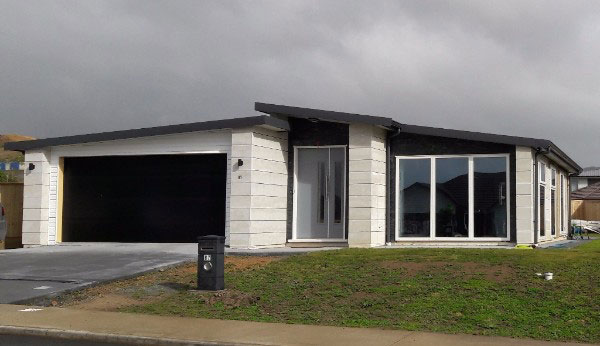New Zealand’s green building boom picks up pace
5Willow Aliento | 8 June 2017
New Zealand’s green building boom picks up paceCertified green buildings in New Zealand are jumping with exponential growth, especially in the residential sector,as the industry takes up where the government left off in mandating higher quality housing.
According to NZ Green Building Council’s director of market transformation Sam Archer there has been a 10-foldincrease in Homestar ratings, from around 650 to over 6500 in the past two years.
The NZGBC is in growth mode with staff now at 17, and moves to bring more tools onto the market.
A version of the Green Building Council of Australia’s Green Star Performance tool will be introduced soon, andthere is already considerable interest from property owners, Mr Archer said.
Green Star Design and As Built tools have also become “standard” for new office developments in NZ.
This is a small and dispersed market comprising around two per cent of commercial space, however, so theNZGBC aims to target the 98 per cent of existing buildings.
The residential though is streaking ahead. Mr Archer said part of the reason was that ratings had been mandatedby authorities for developments in parts of Auckland – a policy that has since been rescinded.
The end of the policy, however, has not slowed uptake, in fact more of NZ’s residential construction industry isengaging with the tool.
Some of the move is also driven by quasi-government agencies delivering a mix of social and private housing.
 A major incentive in the movement for Homestar ratings is concern for occupant health, with New Zealand havingsome of the poorest quality housing in the developed world..
A major incentive in the movement for Homestar ratings is concern for occupant health, with New Zealand havingsome of the poorest quality housing in the developed world..
The nation has the second highest asthma rate of anydeveloped nation, and the very wet, cold maritimeclimate means homes have issues with damp and mould.
“Housing is a huge health problem,” Mr Archer said.
NZ also has some of the lowest standards in terms of itsconstruction code and insulation requirements.
There are no requirements for thermal comfort or energymodelling, unlike the Australian National ConstructionCode, and single glazing is allowed.
Councils moving to tackle climatechange
Many councils also want more sustainable housingbecause of concerns around climate change, Mr Archersaid.
Those who have used the tool and obtained a ratinghave been happy with the process, he said. A newversion of Homestar – Homestar V4 – is in the works,which will be quicker and cheaper. It is due to belaunched in the final quarter of this year.
Volume builders and major developers have indicated a willingness to use the tool if it is “not too complex andexpensive”.
And the timing is good. Because housing supply and affordability are critical policy issues, there are a substantialnumber of homes currently being built or planned. The NZGBC wanted to ensure they were high quality, MrArcher said.
10 star homes
The Homestar tool gives ratings of between one and 10 stars.
There are currently five houses that have achieved 10 Star ratings – in Christchurch, Wellington, Tauranga andAuckland.

New Zealand’s green building boom picks up pace – The Fifth Estate
A Wellington house by Eco Green Homes was the first to receive a 10 Star rating under Homestar V3 Design.
Sustainability elements include enhanced daylight from solar powered skylights, low VOC paints, high levels ofinsulation from structural insulated panel walls, triple-glazed windows, slab-edge insulation, ceiling insulation andan electric car charge point.
“Our mission is to make green homes affordable to the New Zealand market,” Eco Green Homes’ Kush Bhargavasaid.
“In this day and age, there is no excuse not to build green. The benefits far outweigh the costs with nocompromises on quality or comfort. Ultimately these homes save significant costs in the long run.
”Mr Archer said the home’s design was international best practice.
“It just goes to show that Homestar designed and built homes can maximise the living quality of occupants, whileminimising costs. It’s a no-brainer.”

The sustainability trifecta
Another recent 10 Star V3 Design rating in Auckland is targeting the “trifecta” of sustainability – Homestar, Living

The four-bedroom, two-storey with attached one bedroom apartment “Living House” is being developed by ahusband and wife team – Joel Payne, a building materials business owner, and Rochelle Payne, a sustainablebuilding consultant.
It will be constructed from rammed earth with a low pitchgreen roof complete with solar panels. It will also haverainwater tanks to provide potable water, compostingtoilets and a greywater filtration system with subsequentdispersal into evapotranspiration beds.
Mr Archer said the NZGBC’s aim was to see all newhomes built to a 6 Star Homestar standard as a minimum
– a level of quality that is better than code minimum.
“10 Star aspirational homes are great, but we areinterested in bringing the masses up to 6 Star.”
To achieve 6 Star, a home needs to have insulation better than code minimum, water efficient fixtures, FSC-certified timber and low-VOC paints and finishes. Building waste also needs to be managed well, and wherepossible diverted from landfill.
The cost premium for a home of this quality is about a 2.2 per cent increase in build cost. The cost of certificationis $900, and where multiple homes are being constructed, that cost is applied per home typology as a bulkcertification arrangement.
Mr Archer said most developers aspire to that standard anyway.
One of the elements being added for Homestar V4 is blower door testing to test for leaky construction.
“It is about finding a balance, and considering if the industry is ready”.
Commercial
Mr Archer said that in Australia GRESB has driven a lot of uptake in performance tools.“A lot of FM teams are also liking Performance [ratings] because it is a lever to look at their building stock and seewhich buildings are performing least well, and then go to management and get more money to improve them.”
Tags: construction, green buildings, new zealand
